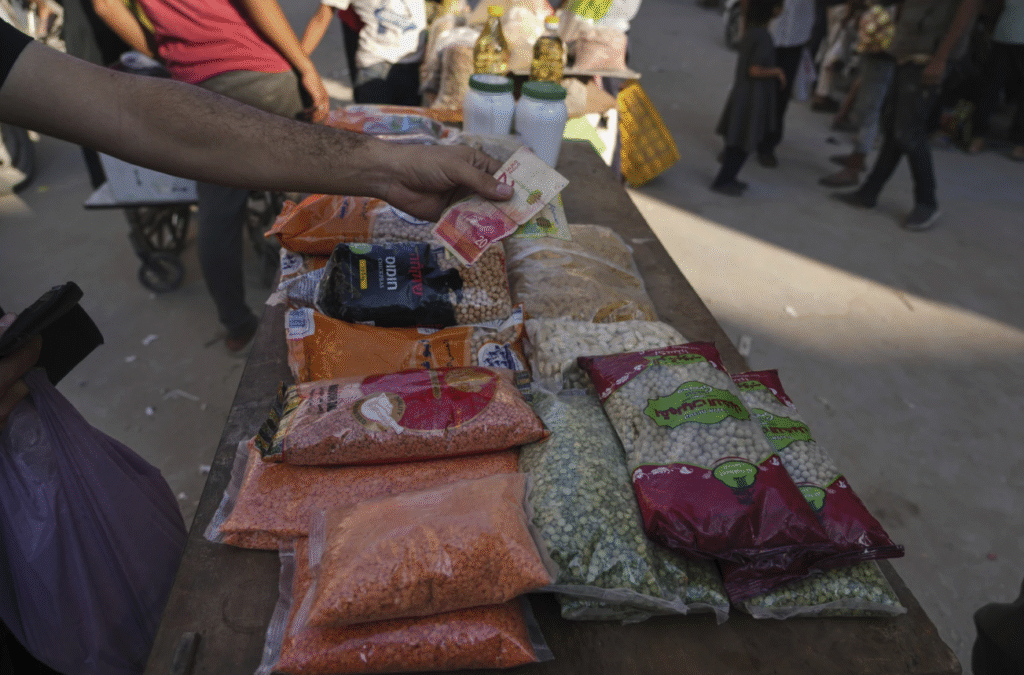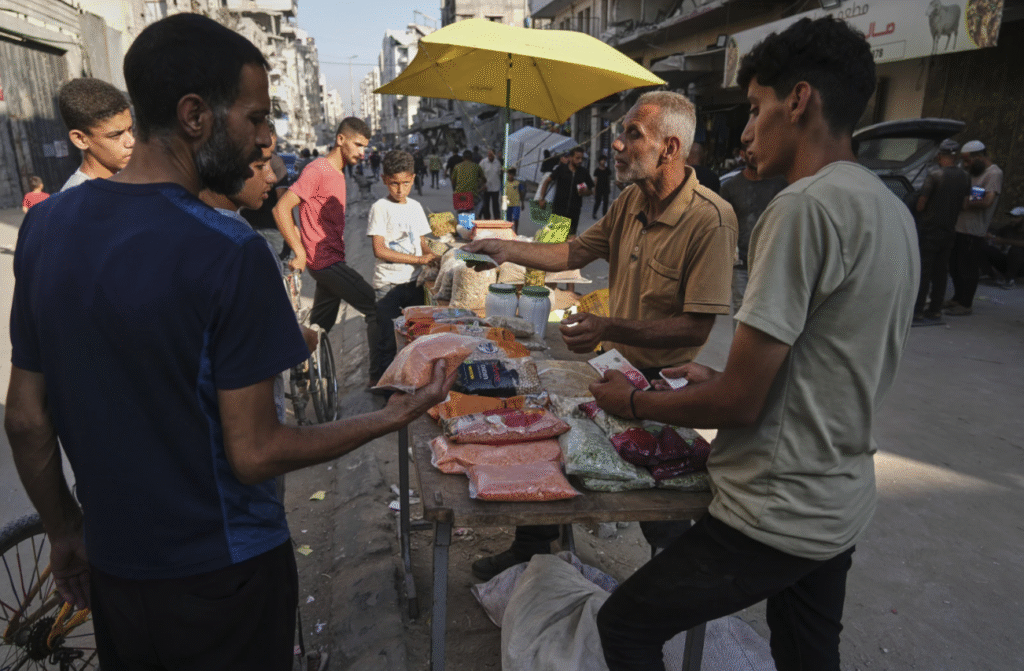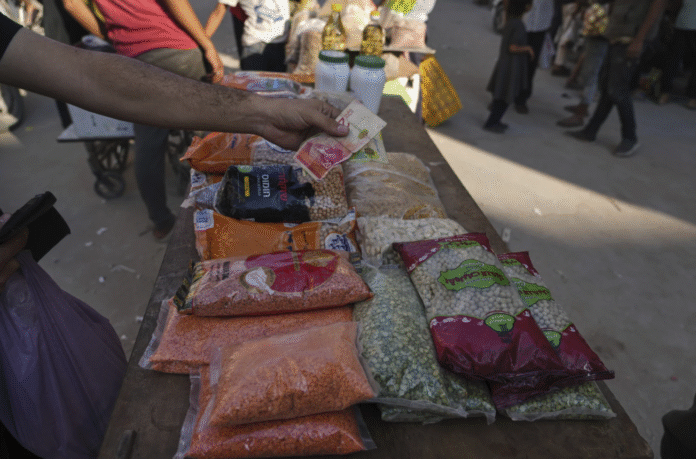Hamas’ Actions Deepen Gaza Humanitarian Aid Crisis
Gaza Humanitarian Aid Crisis is spiraling out of control, and much of the worsening situation stems from Hamas’ actions. While ongoing conflict has made delivering aid a challenge, organized looting, violent gang control, and the breakdown of law and order have left thousands of vulnerable Palestinians without the help they desperately need.
According to aid groups, children and families are being deprived of food not only because of military operations but also because Hamas’ governance collapse has allowed gangs and opportunists to profit from selling humanitarian aid that was meant to be free.
Hamas’ Role in the Breakdown of Aid Delivery
For months, humanitarian organizations like the United Nations (UN) and the World Food Program (WFP) have struggled to deliver life-saving assistance in Gaza. But the problem is not just about crossing military checkpoints, it’s about what happens after aid gets in.
When Hamas-led police forces withdrew from areas under Israeli control earlier this year, they left a security vacuum. In their absence, gangs and armed groups, some allegedly supported by Israel to counter Hamas, seized control of distribution points. This has resulted in violent confrontations, theft, and the large-scale resale of aid at sky-high prices.
A kilogram of flour has reportedly sold for as much as $60, while lentils have gone for $35 per kilogram, prices far beyond what the average Gaza resident can afford. Most of these goods carry UN or aid-organization markings, proof that they were meant to be given free of charge.
Organized Theft and Resale of Humanitarian Aid
Eyewitnesses describe a system where gangs position themselves at the front of aid queues, overpowering others and hoarding supplies. Some resell it directly to merchants, while others trade it for other goods.
Mohammed Abu Taha, a displaced father living in a tent near Rafah, said, “It’s a huge business,” referring to the organized nature of the theft. Women and children often find themselves pushed aside, while strong young men dominate the lines.

In many cases, the chaos benefits those with connections to local gangs. Aid meant for the most vulnerable is instead funneled into a black market economy, with Hamas’ inability or unwillingness to restore order making the problem worse.
Deadly Conditions at Aid Distribution Sites
The Gaza Humanitarian Foundation (GHF), an American contractor-backed initiative, was introduced in May with the stated goal of preventing Hamas from diverting aid. But even there, the situation is dangerous.
In Gaza Humanitarian Aid Crisis more than 1,000 Palestinians have been killed since May while trying to reach food aid, deaths attributed to crowd surges, clashes with Israeli forces, or chaos during distribution. Footage from aid sites shows frenzied scenes, with men racing down fenced corridors and scrambling for boxes.
Hamas has denied direct involvement in aid theft, but their fighters are believed to sometimes be part of these crowds. Whether or not they control the resale networks, the fact remains: without Hamas maintaining order, humanitarian distribution is collapsing.
The Situation Was Different During the Ceasefire
The contrast between now and earlier this year is striking.
During a ceasefire, up to 600 aid trucks entered Gaza daily, with far fewer disruptions. Hamas-led police escorted UN convoys and cracked down on merchants reselling aid. Prices stayed low, and supplies reached more people.
That changed in March when Israel ended the ceasefire and halted imports. The stated goal was to pressure Hamas into releasing hostages taken in the October 7, 2023, attack, the event that sparked the war. But when Hamas retreated from certain areas, lawlessness quickly took over.
The UN’s Position: Only a Ceasefire Will Work
The UN has repeatedly stated that a ceasefire and unrestricted aid entry are the only solutions to stabilize food prices and stop looting. Without overwhelming supply, the scarcity continues to fuel a predatory black market.
However, aid groups also stress that without a functioning internal security force, even increased supply might be stolen or resold. This puts Hamas in the spotlight: the group’s loss of operational control in some areas is directly tied to the humanitarian disaster.

International Pressure on Israel-But Hamas Still Central to the Crisis
Israel recently announced it would allow more aid trucks in, around 180 entered in one day, under international pressure. But, Gaza Humanitarian Aid Crisis is getting bad. While this may temporarily reduce prices, it doesn’t address the root issue: the collapse of distribution security in areas where Hamas no longer provides order.
The Israeli government denies there is starvation in Gaza, while critics accuse it of enabling certain local factions to weaken Hamas. Yet the fact remains: Hamas’ governance vacuum has created a perfect environment for gangs to exploit humanitarian aid for profit.
The Human Cost of Hamas’ Failures
The numbers are grim. The UN estimates 100,000 women and children are suffering from severe acute malnutrition. Dozens have died from hunger-related causes in just the past few weeks. Aid workers themselves are going without food. Gaza Humanitarian Aid Crisis is getting worse.
Every missed delivery, every stolen sack of flour, is another blow to Gaza’s most vulnerable, and a reminder that the humanitarian disaster is as much about political control as it is about conflict.

